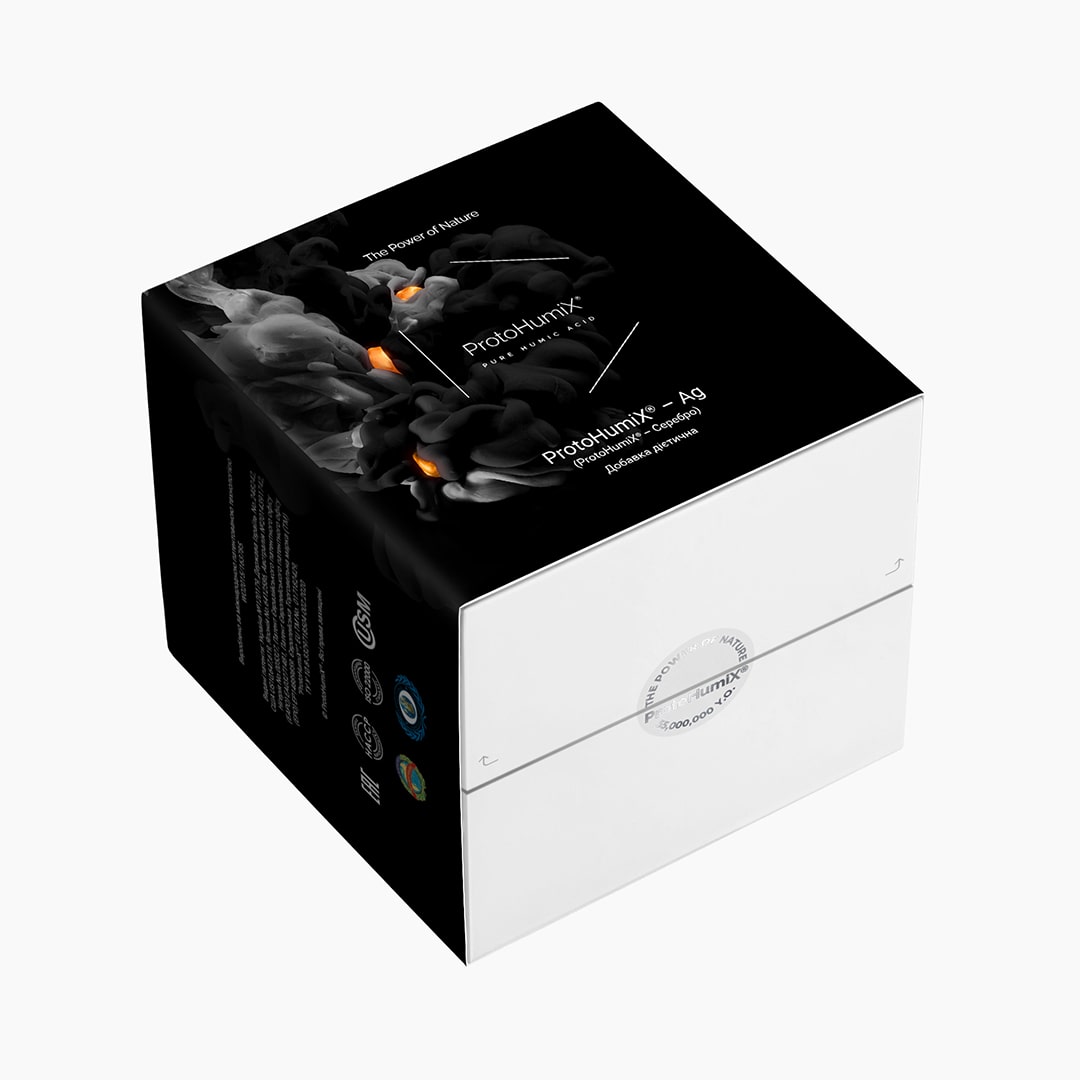ProtoHumiX® – Ag
Гуминовая кислота и ионное серебро
Механизм воздействия: транспортировка в клетку ионов серебра в биодоступной форме.
Серебро в биодоступной форме имеет ярко выраженную антимикробную активность.
Во всем мире серебро рассматривается не просто как металл, способный уничтожать микроорганизмы, а как микроэлемент, являющийся необходимым и постоянным компонентом тканей любого животного и растительного организма.
Ионы серебра принимают участие в обменных процессах в организме. В зависимости от концентрации его катионы могут как стимулировать, так и угнетать активность ряда ферментов. Под влиянием серебра в два раза усиливается интенсивность окислительного фосфорилирования в митохондриях головного мозга, а также увеличивается содержание нуклеиновых кислот, что улучшает функцию головного мозга.
Серебро обладает иммунокорригирующим действием. По данным А. И. Войнара в суточном рационе человека в среднем должно содержаться 88 мкг ионов серебра.
Установлено, что в организме животных и человека содержание серебра составляет 20 мкг на 100 г сухого вещества. Наиболее богаты серебром мозг, железы внутренней секреции, печень, почки и кости скелета.
Ионы серебра токсичны, особенно для низших организмов, поэтому серебро применяется как антисептик. Еще финикийские моряки использовали серебряные сосуды для хранения питьевой воды в течение длительного времени. Металлическое серебро слабо растворяется в воде (до 5 частей на миллиард), но этого достаточно для уничтожения таких бактерий как E. coli и B. typhosus. По данным Всемирной Организации Здравоохранения способность гарантированно убивать определенные бактерии наблюдается при концентрациях ионов серебра свыше 150 мкг/л. При меньшей концентрации они лишь сдерживают размножение бактерий.
